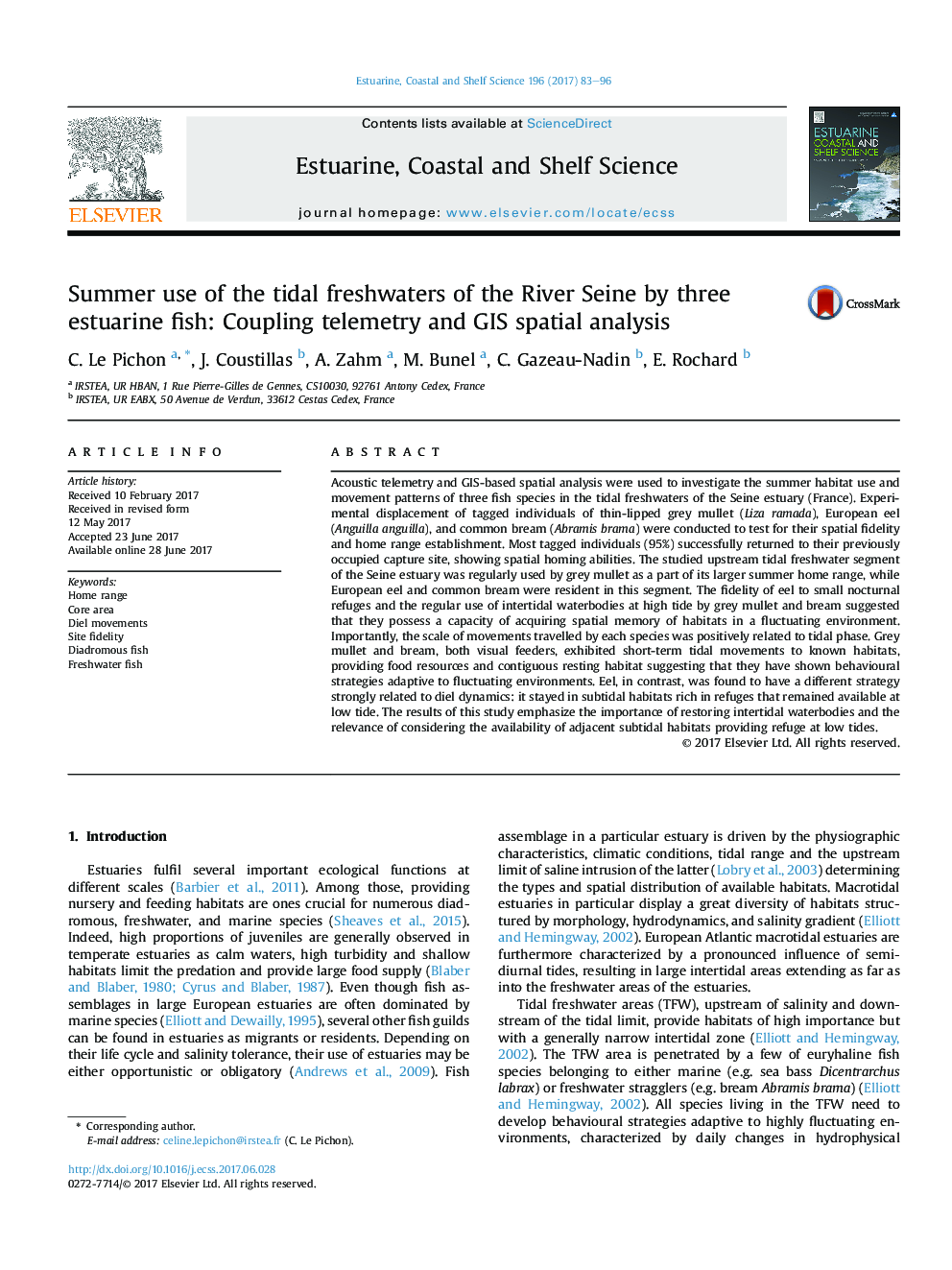| Article ID | Journal | Published Year | Pages | File Type |
|---|---|---|---|---|
| 5765126 | Estuarine, Coastal and Shelf Science | 2017 | 14 Pages |
â¢Coupling telemetry and GIS-based spatial analysis provided accurate results about home ranges and movements.â¢All studied species exhibited tidal movements facilitated by their homing capacities.â¢Mullet and bream, two visual feeders, exploited intertidal mudflats and surrounded subtidal areas.â¢Eel movements were strongly related to diel dynamics, staying in subtidal habitats rich in refuges.â¢Overlapping core areas of activities allowed identifying important summer habitats to be protected.
Acoustic telemetry and GIS-based spatial analysis were used to investigate the summer habitat use and movement patterns of three fish species in the tidal freshwaters of the Seine estuary (France). Experimental displacement of tagged individuals of thin-lipped grey mullet (Liza ramada), European eel (Anguilla anguilla), and common bream (Abramis brama) were conducted to test for their spatial fidelity and home range establishment. Most tagged individuals (95%) successfully returned to their previously occupied capture site, showing spatial homing abilities. The studied upstream tidal freshwater segment of the Seine estuary was regularly used by grey mullet as a part of its larger summer home range, while European eel and common bream were resident in this segment. The fidelity of eel to small nocturnal refuges and the regular use of intertidal waterbodies at high tide by grey mullet and bream suggested that they possess a capacity of acquiring spatial memory of habitats in a fluctuating environment. Importantly, the scale of movements travelled by each species was positively related to tidal phase. Grey mullet and bream, both visual feeders, exhibited short-term tidal movements to known habitats, providing food resources and contiguous resting habitat suggesting that they have shown behavioural strategies adaptive to fluctuating environments. Eel, in contrast, was found to have a different strategy strongly related to diel dynamics: it stayed in subtidal habitats rich in refuges that remained available at low tide. The results of this study emphasize the importance of restoring intertidal waterbodies and the relevance of considering the availability of adjacent subtidal habitats providing refuge at low tides.
